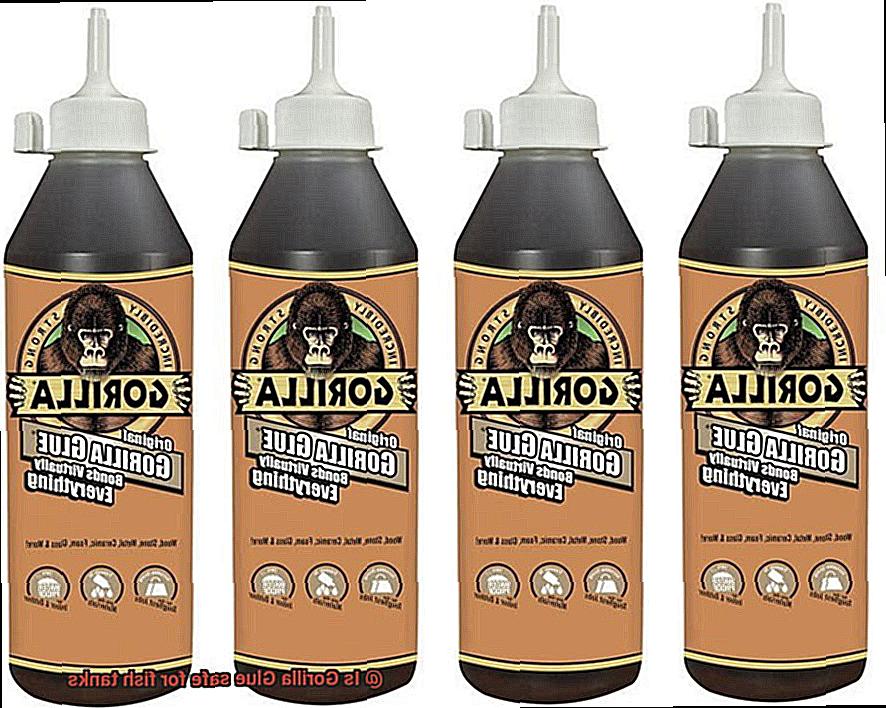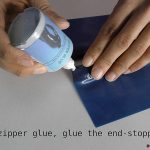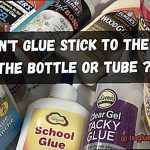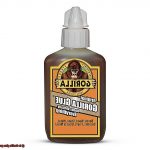Ever had a run-in with Gorilla Glue that left you feeling like your skin was glued to the problem at hand? We’ve all been there, desperately trying to pry our fingers apart while wondering if this adhesive powerhouse is safe for our delicate dermis.
In this blog post, we shall embark on a quest to unveil the truth behind the burning question: Is Gorilla Glue safe for human skin? Prepare yourself for a journey into the scientific depths of this popular adhesive, as we uncover potential risks and arm you with invaluable tips to tackle any accidental bonding mishaps. So grab your magnifying glass and let’s unravel the mysteries surrounding this sticky predicament once and for all.
The Dangers of Using Gorilla Glue on Human Skin
Contents
Using Gorilla Glue on human skin can have severe consequences that should never be underestimated or ignored. This ultra-strong adhesive is specifically designed for surfaces such as wood, metal, ceramics, and plastics, but it is not meant for direct contact with the skin. Let’s explore the potential dangers associated with using Gorilla Glue on human skin in more detail:
- Rapid bonding: The moment Gorilla Glue comes into contact with the skin, it bonds quickly and creates an incredibly strong and tight seal. This immediate bonding can cause excruciating pain and make it extremely challenging to remove the glue without professional assistance.
- Chemical burns: The potent adhesive properties of Gorilla Glue, combined with the heat generated during the curing process, have the potential to cause chemical burns on the skin. These burns can lead to intense redness, blistering, and agonizing pain that can last for an extended period.
- Allergic reactions: Unfortunately, some individuals may experience an allergic reaction to Gorilla Glue. This allergic response can manifest as redness, swelling, itching, and a distressing rash. The severity of these reactions can vary from mild discomfort to severe complications requiring medical attention.
- Skin damage: Attempting to forcibly remove Gorilla Glue from the skin by pulling or peeling it off can cause additional harm. The glue may stubbornly cling to the skin, resulting in tears and open wounds. These wounds not only increase the risk of infection but also prolong the healing process.
- Use of solvents: Some people may consider using solvents or other chemicals to dissolve Gorilla Glue on their skin. However, this approach can be extremely dangerous and potentially worsen the situation by causing additional harm to the skin. It is crucial to exercise caution when applying any chemicals on the skin.
In severe cases, using Gorilla Glue on the skin may require immediate medical intervention, including surgical removal of the adhesive. To prevent accidental skin contact with Gorilla Glue, it is advisable to wear protective gloves whenever using the adhesive. Additionally, keeping the glue out of reach of children and pets is essential to avoid any potential accidents.
Health Risks Associated with Gorilla Glue
Gorilla Glue, a powerful adhesive commonly used for bonding different materials, poses potential health risks when applied to human skin. The chemicals in the glue can cause irritation and allergic reactions, leaving individuals with sensitive skin vulnerable to redness, itching, and blistering. Furthermore, Gorilla Glue contains polyurethane, a potent compound that can generate heat when exposed to certain substances or moisture. If the glue becomes trapped between the skin and another surface, it can result in painful chemical burns that may require medical attention.
Inhalation of Gorilla Glue fumes can also be harmful. The glue releases volatile organic compounds (VOCs) that irritate the respiratory system, leading to symptoms such as coughing, wheezing, and shortness of breath. Prolonged exposure to these fumes can have more severe health effects.
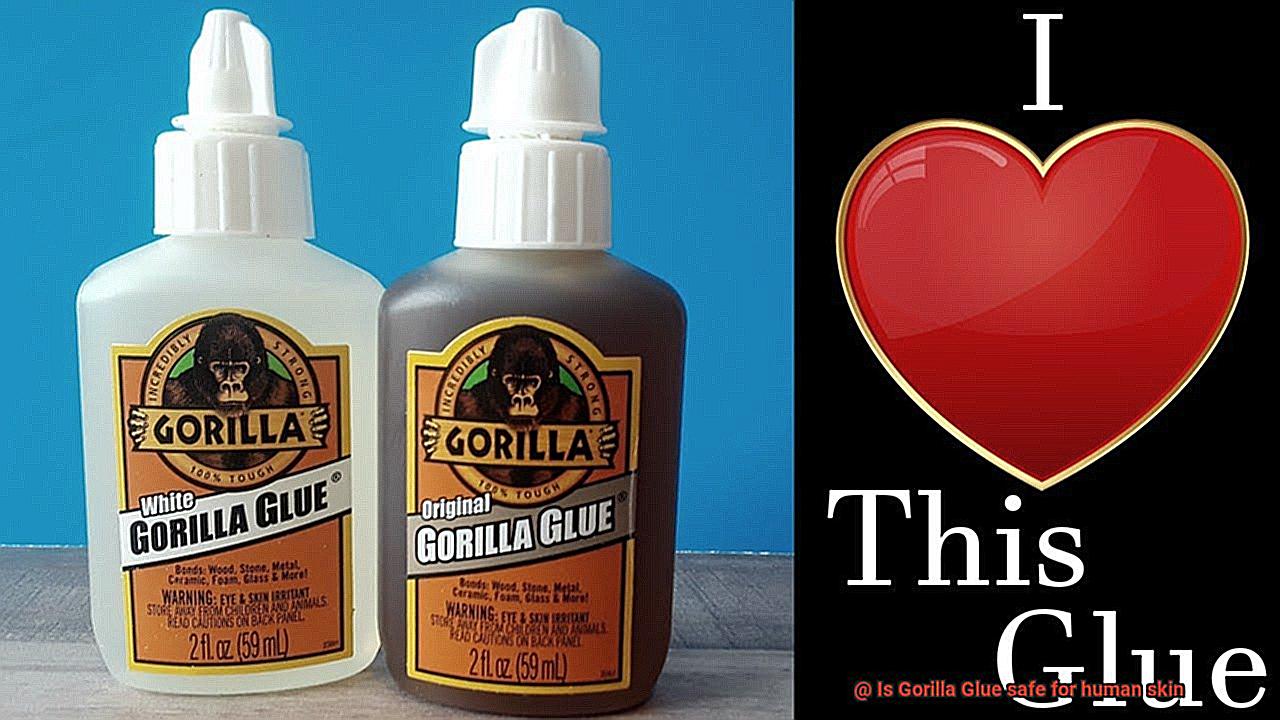
While the product’s packaging explicitly states that it should be kept away from the eyes, skin, and clothing, accidents happen, and individuals may inadvertently come into contact with the glue or misuse it. In such cases, prompt action is crucial to minimize potential health risks. Washing the affected area immediately with water and mild soap is recommended to remove as much of the glue as possible. If irritation or an allergic reaction occurs, seeking medical advice is advisable.
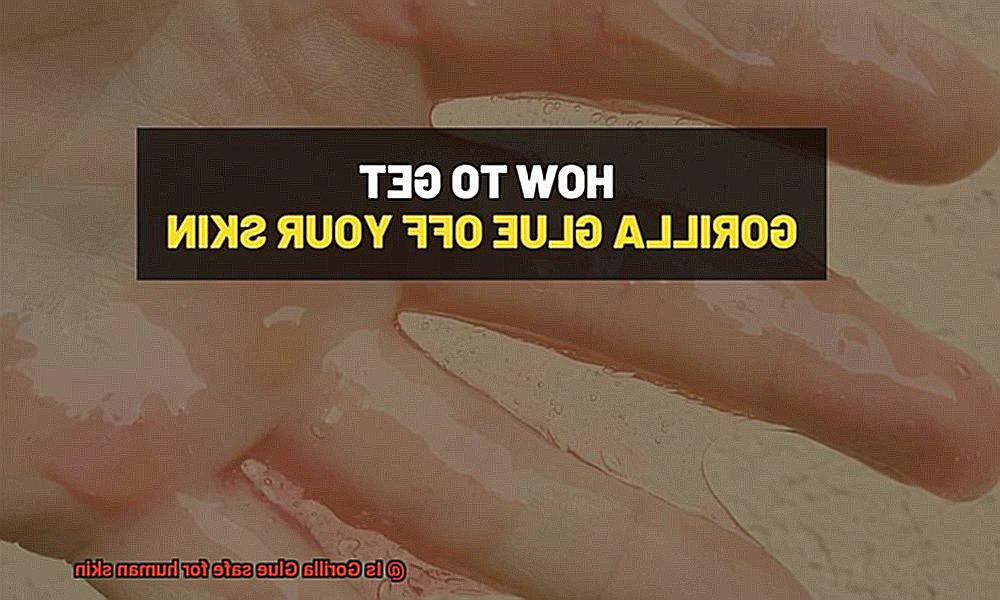
To prevent incidents altogether, it is vital to take proper precautions when using Gorilla Glue. This includes wearing gloves and protective clothing to minimize skin contact, working in well-ventilated areas to reduce exposure to fumes, and meticulously following the manufacturer’s instructions.
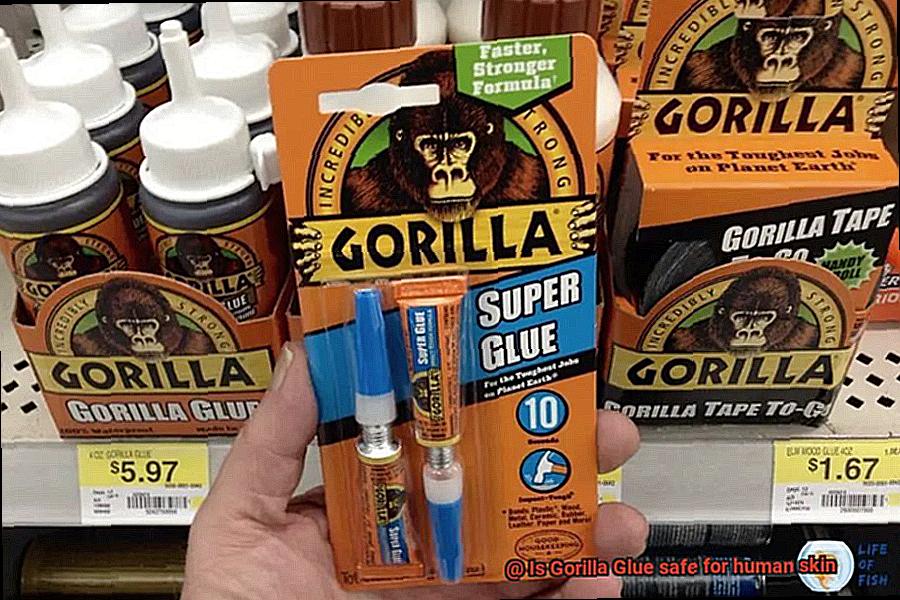
How to Remove Gorilla Glue from Skin
When Gorilla Glue gets on your skin, it’s important to remain calm and avoid panicking. Panicking can lead to hasty actions that may worsen the situation. Instead, take a deep breath and focus on safely removing the glue.
It’s crucial not to pull or scrape at the glue on your skin. Doing so can cause damage to the skin and increase the risk of injury. Instead, try to find a gentle solvent that can help break down the adhesive properties of Gorilla Glue.
Use Acetone as a Solvent
One effective solvent for removing Gorilla Glue from skin is acetone. Acetone is a powerful solvent that can dissolve many types of adhesives. However, it’s important to use acetone with caution on the skin, as it can be drying and irritating.
To use acetone, pour a small amount onto a clean cloth or cotton ball. Gently dab the affected area with the acetone-soaked cloth, being careful not to rub or scrub vigorously. Allow the acetone to sit on the glue for a few minutes, giving it time to soften and loosen.
After a few minutes, use a clean cloth or paper towel to gently wipe away the softened glue. If necessary, repeat this process until all traces of Gorilla Glue have been removed. Once the glue is gone, wash the area thoroughly with soap and water to remove any remaining residue.
Alternatives to Acetone
If you don’t have acetone readily available, there are other alternatives that may help in removing Gorilla Glue from skin. Rubbing alcohol or isopropyl alcohol can also be effective solvents for breaking down the adhesive properties of the glue.
Apply the alcohol to a cloth and gently dab the affected area, allowing it to sit for a few minutes before wiping away the softened glue. Remember to wash the area thoroughly with soap and water after removing the glue.
Warm Soapy Water for Loosening the Glue
In some cases, warm soapy water can also help in loosening Gorilla Glue from skin. Soak the affected area in warm, soapy water for several minutes to soften the adhesive. After soaking, gently rub the area with a cloth or sponge to remove the glue. Repeat this process if necessary.
Remember to avoid using excessive force when rubbing the area, as this can cause irritation and damage to the skin. Always be gentle and patient during the removal process.
Seek Medical Advice if Needed
Removing Gorilla Glue from skin may take some time and persistence. However, if you experience any discomfort or irritation while trying to remove the glue, it’s advisable to seek medical advice.
A healthcare professional will be able to provide appropriate guidance and treatment options if necessary. It’s better to be safe and consult a professional if you’re unsure about how to safely remove Gorilla Glue from your skin.
Tips for Preventing Accidental Contact with Gorilla Glue
Wear Protective Gear
When working with Gorilla Glue, it is essential to protect your skin by wearing gloves. Gloves create a barrier between the glue and your skin, reducing the risk of any harm or adverse reactions. Nitrile or latex gloves are recommended for their durability and resistance to chemicals.
Ensure Proper Ventilation
Working in a well-ventilated area is crucial to prevent inhaling any fumes that may be released during the application process. Fumes from Gorilla Glue can cause respiratory irritation, so opening windows or using fans can improve air circulation and reduce the concentration of fumes in the environment.
Be Precise and Cautious
To minimize accidental contact with Gorilla Glue, it is important to be careful and precise when applying it. Using too much glue increases the chances of it coming into contact with your skin. Apply small amounts of glue at a time and use tools like brushes or applicators for controlled and accurate application.
Proper Storage and Disposal
Keep Gorilla Glue out of reach of children and pets by storing it in a locked cabinet or high shelf. Ensure that the cap is tightly sealed after each use to prevent leaks or spills that could result in skin contact. Dispose of empty containers properly according to local regulations.
Prompt Action for Accidental Contact
If you accidentally come into contact with Gorilla Glue, do not panic. Soak the affected area in warm soapy water for several minutes to soften the glue. Gently peel or roll the glue off once it has softened enough. If needed, seek medical attention for severe irritation or burns.
Alternatives to Using Gorilla Glue on Human Skin
Using Gorilla Glue on human skin can be risky and potentially harmful. However, there are many alternatives available that can safely bond various materials without causing damage to your skin. Here are some options to consider:
- Medical-grade adhesive products: These products are specifically designed for skin use and are commonly used in hospitals and medical settings for wound closure and securing medical devices. They provide a strong bond without causing irritation or harm to the skin.
- Adhesive tapes and bandages: These are widely available and can be used to hold things together temporarily or to secure dressings in place. Adhesive tapes and bandages are easy to use and do not pose any risks to your skin.
- Specialized cosmetic adhesives: For attaching false eyelashes or other temporary body decorations, there are adhesives available in the market that are designed to be safe for use on the skin. These products provide a strong bond while being easily removable without causing any damage.
- Natural alternatives: In some cases, natural alternatives can be used. For minor cuts or wounds, honey has been found to have antibacterial properties and can act as a natural adhesive. However, it’s important to note that natural alternatives may not always provide the same level of strength or durability as synthetic adhesives.
It’s always best to seek professional advice from a healthcare provider or pharmacist if you find yourself in a sticky situation with adhesive-related issues on your skin. They can provide guidance on the best alternative options based on your individual circumstances and ensure proper care and safety.
Conclusion
To sum up, it is abundantly clear that applying Gorilla Glue to human skin can have grave consequences and should be absolutely avoided. The immediate adhesion, potential for chemical burns, allergic reactions, and skin damage all make it glaringly apparent that this adhesive is not meant for direct contact with the delicate surface of our skin.
If you do find yourself in a predicament where Gorilla Glue has adhered to your skin, it is crucial to remain composed and refrain from yanking or scraping at the glue. Instead, opt for solvents like acetone or rubbing alcohol to break down the adhesive properties of the glue. For a gentler approach, warm soapy water can also work wonders in loosening the grip of the glue.
Prevention is undeniably paramount when it comes to avoiding accidental encounters with Gorilla Glue. Donning protective gloves, working in well-ventilated spaces, exercising precision and caution during application, and properly storing and disposing of the glue are vital steps to take.
Thankfully, there are safe alternatives available that can bond materials without causing harm to your precious skin. Medical-grade adhesive products, adhesive tapes and bandages designed specifically for this purpose, specialized cosmetic adhesives tailored for various needs – these options exist to keep you protected. And believe it or not, even natural remedies like honey can come to your aid when dealing with minor cuts or wounds.
Always remember that seeking professional advice is crucial if you encounter any issues related to adhesive mishaps on your skin. Healthcare providers or pharmacists possess the knowledge needed to guide you towards the best alternative options based on your unique circumstances. They will ensure proper care and safety every step of the way.
So next time you find yourself grappling with a sticky situation involving Gorilla Glue and human skin, bear in mind the risks involved and take every necessary precaution to safeguard yourself.

